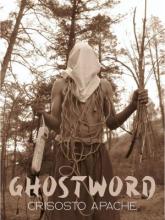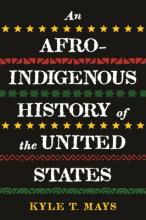
Mays explores the relationship and differences between the Black American quest for freedom and the Native American struggle for sovereignty in the U.S.
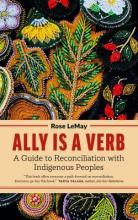
This potent, practical book is a manual for allies for Indigenous Peoples. It presents a roadmap to creating better relationships, equity, and true reconciliation. It offers concrete steps individuals can take, in the organizations they work for and in their personal lives, to become powerful allies.
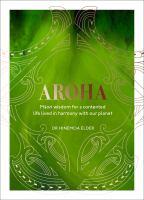
Through 52 whatatauki - traditional Māori life lessons - Māori psychiatrist Dr Hinemoa Elder shares the power of Aroha and explores how it could help us all every day...The 52 life lessons are arranged into 4 chapters that introduce the different, important facets of Aroha: Manaakitanga (kindness); Kaitiakitanga (love for our world); Whanaungatanga (empathy); and Tino rangatiratanga (what is right).
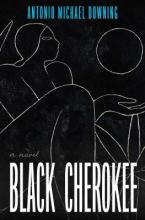
Ophelia Blue Rivers is a descendent of Cherokee Freedmen: Blacks formerly enslaved by rich southern Cherokee. She is "Black" but doesn't understand why that makes her different. She is "Cherokee" but struggles to know what that means. Their town of Etsi--once a reservation--still lives with the wounds of its disbanding. When the town, and the river that sustains it, are put in mortal danger personal rivalries threaten their very survival. Against this backdrop Ophelia begins her spirited, at times harrowing, search for place and family. She must discover: what does it mean to belong when belonging comes at such a high price?
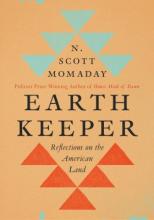
Earth Keeper is a story of attachment, rooted in oral tradition. Momaday recalls stories of his childhood that have been passed down through generations, stories that reveal a profound and sacred connection to the American landscape and a reverence for the natural world. In this moving work, he offers an homage and a warning. Momaday reminds us that the Earth is a sacred place of wonder and beauty; a source of strength and healing that must be protected before it's too late. As he so eloquently yet simply reminds us, we must all be keepers of the Earth.
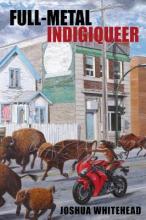
This poetry collection focuses on a hybridized Indigiqueer trickster character named Zoa who brings together the organic (the protozoan) and the technologic (the binaric) to re-beautify and re-member queer Indigeneity. A Two-Spirit/Indigiqueer invention, Zoa infects, invades, and infests as a virus inside canonical and popular works in order to re-centre the lives of Two-Spirit individuals. In their fierce defence, Zoa takes on the likes of Shakespeare, Spenser, Dickens, and Milton, romps through the fields of cyberpunks and biopunks, takes notes from popularized horror icons, and emulates contemporary pop-culture phenomenons like Lana del Rey, RuPaul's Drag Race, X-Men, Grindr, and Peter Pan -- all to build new territories in literature, pop culture, and oral storytelling.
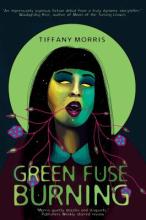
After the death of her estranged father, artist Rita struggles with grief and regret. There was so much she wanted to ask him--about his childhood, their family, and the Mi'kmaq language and culture from which Rita feels disconnected. But when Rita's girlfriend Molly forges an artist's residency application on her behalf, winning Rita a week to paint at an isolated cabin, Rita is both furious and intrigued. The residency is located where her father grew up. On the first night at the cabin, Rita wakes to strange sounds. Was that a body being dragged through the woods?

Olivia Becente was never supposed to have the gift. The ability to commune with the dead was the specialty of her sister, Naiche. But when Naiche dies unexpectedly and under strange circumstances, somehow Olivia suddenly can't stop seeing and hearing from spirits. A few years later, she's the most in-demand paranormal investigator in Denver. She's good at her job, but the loss of Naiche haunts her. That's when she hears from the Brown Palace, a landmark Denver hotel. The owner can't explain it, but every few years, a girl is found dead in room 904, no matter what room she checked into the night before.
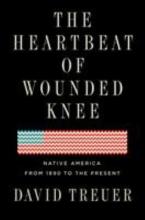
The received idea of Native American history -- as promulgated by books like Dee Brown's 1970 mega-bestselling Bury My Heart at Wounded Knee -- has been that American Indian history essentially ended with the 1890 massacre at Wounded Knee. Not only did one hundred fifty Sioux die at the hands of the U. S. Cavalry, but Native civilization did as well. Growing up Ojibwe on a reservation in Minnesota, training as an anthropologist, and researching Native life past and present for his nonfiction and novels, David Treuer has uncovered a different narrative. Because they did not disappear -- and not despite but rather because of their intense struggles to preserve their language, their traditions, their families, and their very existence -- the story of American Indians since the end of the nineteenth century to the present is one of unprecedented resourcefulness and reinvention.
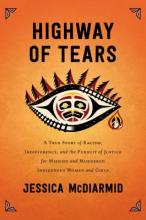
In the vein of the astonishing and eye-opening bestsellers 'I'll Be Gone in the Dark' and 'The Line Becomes a River,' this stunning work of investigative journalism follows a series of unsolved disappearances and murders of Indigenous women in rural British Columbia.
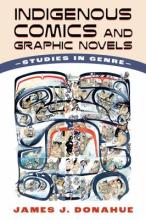
James J. Donahue aims to interrogate and unravel the disparities of representation in the fields of comics studies and comics publishing. Donahue documents and analyzes the works of several Indigenous artists, including Theo Tso, Todd Houseman, and Arigon Starr. Through topically arranged chapters, the author explores a wide array of content produced by Indigenous creators, from superhero and science fiction comics to graphic novels and experimental narratives. While noting the importance of examining how Indigenous works are analyzed, Donahue emphasizes that the creation of artistic and critical spaces for Indigenous comics and graphic novels should be an essential concern for the comics studies field.

Pop singer Avery Fox has become a national joke after posing scantily clad on the cover of Rolling Stone in a feather war bonnet. What was meant to be a statement of her success as a Native American singer has turned her into a social pariah and dubbed her a fake. With threats coming from every direction and her career at a standstill, she escapes to her estranged grandmother Lottie's ranch in Oklahoma. Living on the rez is new to Avery: not only does she have to work in the blazing summer heat to earn her keep, but the man who runs Lottie's horse ranch despises her and wants her gone.
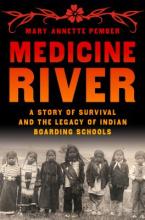
From the mid-19th century to the late 1930s, tens of thousands of Native children were pulled from their families to attend boarding schools that claimed to help create opportunity for these children to pursue professions outside their communities and otherwise 'assimilate' into American life. In reality, these boarding schools--sponsored by the US Government but often run by various religious orders with little to no regulation--were an insidious attempt to destroy tribes, break up families, and stamp out the traditions of generations of Native people.
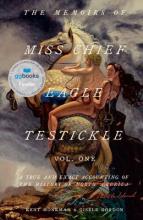
From global art superstar Kent Monkman and his longtime collaborator Gisèle Gordon, a transformational work of imagined history that will remake readers' understanding of the land called North America. For decades, the singular and provocative paintings by Cree artist Kent Monkman have featured a recurring character--an alter ego of sorts, a shape-shifting, time-travelling elemental being named Miss Chief Eagle Testickle. Though we have glimpsed her across the years, and in countless canvases, it is finally time to hear her story, in her own words. And, in doing so, to hear the whole history of Turtle Island anew.

A debut novel from a rising literary star that brings the modern queer and Indigenous experience into sharp relief. In Northern Alberta, a queer Indigenous doctoral student steps away from his dissertation to write a novel. He is adrift, caught between his childhood on the reservation and this new life of the urban intelligentsia... Minor Chorus introduces the dazzling literary voice of a Lambda Literary Award winner and Canadian #1 national best-selling poet to the United States, shining much-needed light on the realities of Indigenous survival.
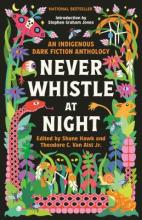
In twenty-five wholly original and shiver-inducing tales, bestselling and award-winning authors including Tommy Orange, Rebecca Roanhorse, Cherie Dimaline, Waubgeshig Rice, and Mona Susan Power introduce readers to ghosts, curses, hauntings, monstrous creatures, complex family legacies, desperate deeds, and chilling acts of revenge. Introduced and contextualized by bestselling author Stephen Graham Jones, these stories are a celebration of Indigenous peoples' survival and imagination, and a glorious reveling in all the things an ill-advised whistle might summon.
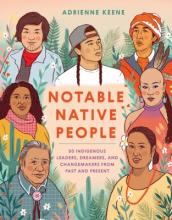
An accessible and educational illustrated book profiling 50 notable American Indian, Alaska Native, and Native Hawaiian people... Celebrate the lives, stories, and contributions of Indigenous artists, activists, scientists, athletes, and other changemakers in this illustrated collection. Also offers accessible primers on important Indigenous issues, from the legacy of colonialism and cultural appropriation to food sovereignty, land and water rights, and more. An indispensable read for people of all backgrounds seeking to learn about Native American heritage, histories, and cultures, Notable Native People will educate and inspire readers of all ages.
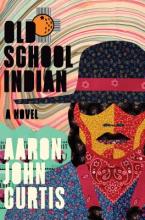
An astonishing coming-of-middle-age debut about an Ahkwesáhsne man's reluctant return home....Delivered with crackling wit and wildly inventive linguistic turns, Old School Indian is a striking exploration of the power and secrets of family, the capacity for healing and catharsis, and the ripple effects of history and culture.
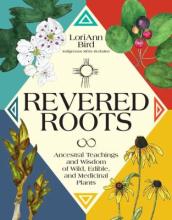
With Indigenous Métis herbalist LoriAnn Bird as your guide, connect with the ancestral wisdom of over 90 wild edible and medicinal plants from across North America. A purposeful and powerful reference to the lessons, nourishment, healing, and history of our 'plant teachers,' Revered Roots shares guidance on exploring, gathering, and reclaiming these long-revered plants as food and medicine.
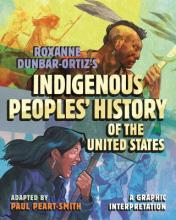
In stunning full color and accessible text, a graphic adaptation of the American Book Award winning history of the United States as told from the perspective of Indigenous peoples.
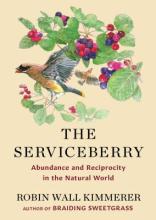
A bold and inspiring vision for how to orient our lives around gratitude, reciprocity, and community, based on the lessons of the natural world.
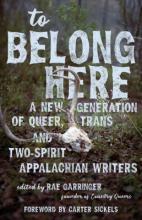
Featuring contributors whose identities across race, gender, and socioeconomic background make for a uniquely intersectional look at the area, this collection provides a nuanced understanding of Appalachia and what it means to represent it. Themes of erasure, environmentalism, violence, kinship, racism, Indigeneity, queer love, and trans liberation course through the volume and exemplify the writers' resilience in reconciling their complex and often contradictory connections to home. A collective exploration of rejection and acceptance, To Belong Here calls for a more inclusive future in Appalachia--one where everyone can thrive.

Through lyrical prose and evocative watercolor illustrations by award-winning Muscogee artist Dana Tiger, Washing My Mother's Body explores the complexity of a daughter's grief as she reflects on the joys and sorrows of her mother's life. She lays her mother to rest in the landscape of her memory, honoring the hands that raised her, the body that protected her, and the legs that carried her mother through adversity. Moving, comforting, and deeply emotional, Washing My Mother's Body is a tender look at mother-daughter relationships, the complexity of grieving the loss of a parent, and the enduring love of those left behind.

No one played like Jesse Ed Davis. One of the most sought-after guitarists of the late 1960s and '70s, Davis appeared alongside the era's greatest stars--John Lennon and Mick Jagger, B.B. King and Bob Dylan--and contributed to dozens of major releases, including numerous top-ten albums and singles, and records by artists as distinct as Johnny Cash, Taj Mahal, and Cher. But Davis, whose name has nearly disappeared from the annals of rock and roll history, was more than just the most versatile session guitarist of the decade. A multitalented musician who paired bright flourishes with soulful melodies, Davis transformed our idea of what rock music could be and, crucially, who could make it.
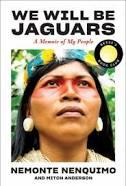
Born into the Waorani tribe of Ecuador's Amazon rainforest, one of the last to be contacted by missionaries in the 1950s, Nemonte Nenquimo had a singular upbringing. She was taught about plant medicines, foraging, oral storytelling, and shamanism by her elders. At age fourteen, she left the forest for the first time to study with an evangelical missionary group in the city. Eventually, her ancestors began appearing in her dreams, pleading with her to return and embrace her own culture. She listened. Two decades later, Nemonte has emerged as one of the most forceful voices in climate change activism.
